12 Cory Catfish Species For Your Aquarium Tank
A list of the best cory catfish for your aquarium
:max_bytes(150000):strip_icc():format(jpeg)/cory-species-1381075-hero-428760d1d0c64014a73b2d119325f420.jpg)
The Spruce / Adrienne Legault
Corydoras catfish, or cory catfish, are beloved by all who have owned them. These peaceful fish are hardy, attractive, and lively. They can even help you keep your tank clean. Virtually all cory species should be kept in schools; stories of single corys pining away from loneliness are not uncommon. Corys should be kept only with small- to medium-sized peaceful fish.
What Is a Cory?
A cory is a catfish. They are small, peaceful, bottom-dwelling scavengers. There are 161 cory species. Generally, these schooling fish require at least a 10-gallon tank with a tropical temperature. They are easy to care for in a tank on their own or with other species.
Corys, like all catfish, are bottom feeders and scavengers (though they also appreciate a meal of brine shrimp). On the one hand, that means they can help to keep your tank clean by finding and eating bits of uneaten food and other debris. On the other hand, corys tend to make a bit of a mess as they poke through the substrate and send algae and other muck into the water. Bottom line, while they can be considered part of your tank's "clean-up crew," they'll need a little help from snails, shrimp, and other scavengers.
Here are 12 popular cory catfish species that you can add to your tank.
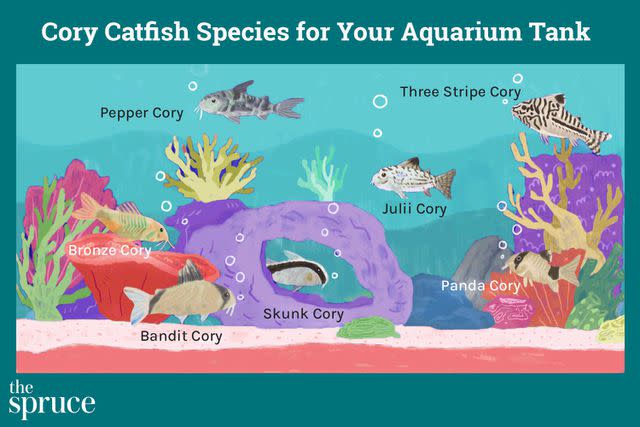
The Spruce / Catherine Song
Bandit Cory
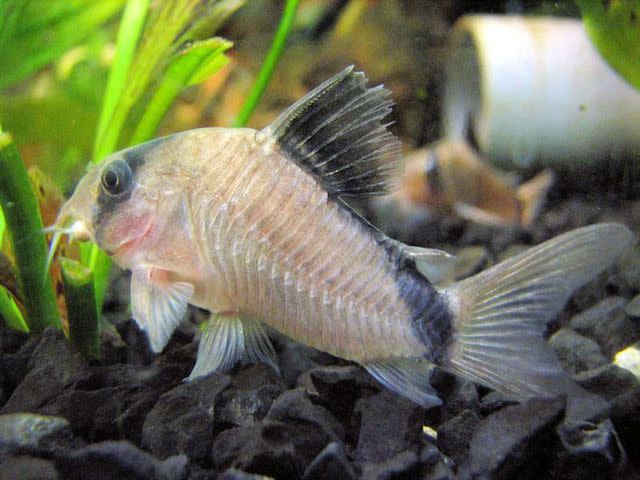
Species Overview
Scientific name: Corydoras metae
Adult size: 2 inches (5 cm)
Lifespan: 5 years
Minimum tank size: 10 gallon
pH: 6.5–7.0
Hardness: 5–10 degrees dGH
Temperature: 72–79 degrees F (22–26 degrees C)
Tankmates: Peaceful schooling species
Bandit corys have been in the aquarium trade for a long time and are one of the more popular members of this family. They are easily identifiable by the black mask over the eyes. Bandits are more sensitive to variations in water temperature than some other species.
Bronze Cory
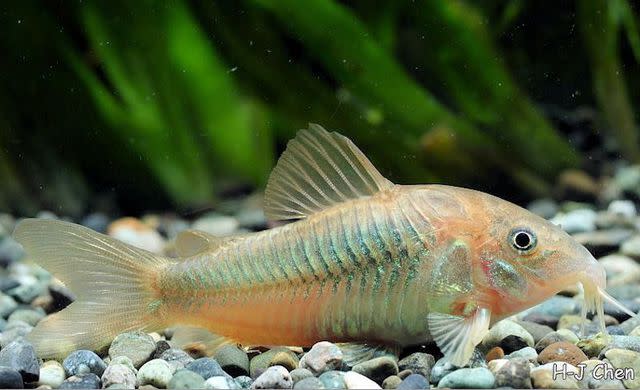
Species Overview
Scientific name: Corydoras aeneus
Also known as: Green Corydoras
Adult size: 2.5 inches (6 cm)
Lifespan: 5 years
Minimum tank size: 10 gallon
pH: 5.8–7.0
Hardness: 2–30 degrees dGH
Temperature: 72–79 degrees F (22–26 degrees C)
Tankmates: Peaceful schooling fish
Like pepper corys, bronze corys are very popular and readily available everywhere. These two species of corys are hands down the most commonly kept members of this family. Bronze corys are available in several color morphs, including green, bronze, albino, and black. They do well in a range of conditions but should be kept in schools.
Julii Cory
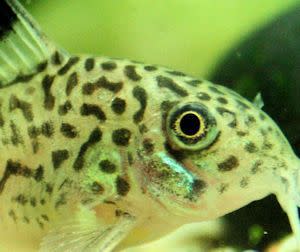
Species Overview
Scientific name: Corydoras julii
Adult size: 2.5 inches (6 cm)
Lifespan: 5+ years
Minimum tank size: 10 gallon
pH: 6.5–7.8
Hardness: to 20 degrees dGH
Temperature: 73–79 degrees F (23–26 degrees C)
Tankmates: Peaceful bottom-dwelling schooling fish
Although this species may be seen for sale in pet shops, it rarely is the real McCoy. Instead, what is labeled as a julii is its kissing cousin the three stripe cory. True julis have spots that are generally not connected into long chains, as they are in the three stripe cory.
Panda Cory
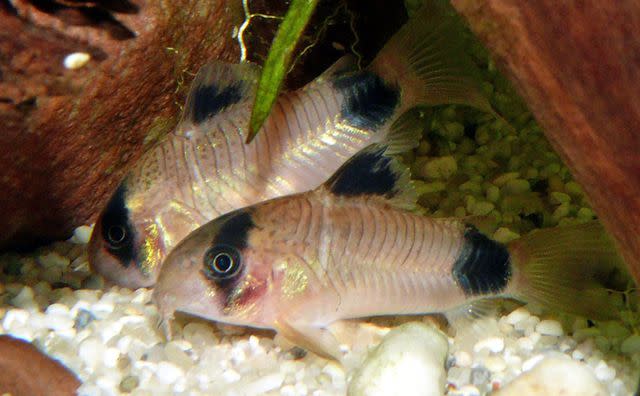
Species Overview
Scientific name: Corydoras panda
Also known as: Panda Catfish, Panda Corydoras
Adult size: 2 inches (5 cm)
Lifespan: 10+ years
Minimum tank size: 10 gallon
pH: 6.0–7.0
Hardness: 2–12 degrees dGH
Temperature: 68–77 degrees F (20–25 degrees C)
Tankmates: Peaceful, compatible with all species, keep in schools
Panda corys are highly social and should always be kept in schools of their own kind. They get along with virtually all other peaceful species and have been known to school along with other bottom-dwelling species. Pandas prefer cooler temps and are suitable for unheated aquariums. You can also look for the longfin panda cory to add variety to your tank.
Pepper Cory
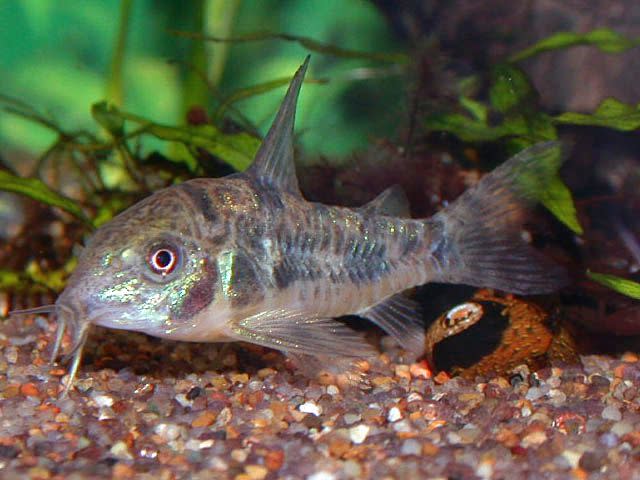
Species Overview
Scientific name: Corydoras paleatus
Also known as: Blue Leopard Corydoras, Peppered Catfish, Peppered Cory
Adult size: Males–2.5 inches (6.5 cm), Females–3 inches (7.5 cm)
Lifespan: 5 years
Minimum tank size: 15 gallon
pH: 6.0–7.0
Hardness: to 12 degrees dGH
Temperature: 72–78 degrees F (22–26 degrees C)
Tankmates: Peaceful, best kept in schools with other smaller fish
Pepper corys are perhaps the most commonly kept member of this family and are widely available at pet shops everywhere. They are peaceful and get along with virtually all fish, but should not be kept with large aggressive species.
Skunk Cory
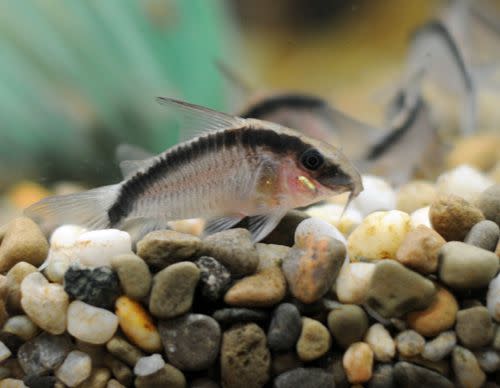
The Spruce / Shirlie L Sharpe
Species Overview
Scientific name: Corydoras arcuatus
Adult size: 2 inches (5 cm)
Lifespan: 5 years
Minimum tank size: 10 gallon
pH: 6.8–7.5
Hardness: 2–25 degrees dGH
Temperature: 72–79°F (22–26 degrees C)
Tankmates: Peaceful, enjoys a large school
Skunk corys are more sensitive to elevated ammonia and nitrates than other species. For this reason, they are not recommended for a brand new aquarium. Instead, wait until the tank is matured before adding this species.
Three Stripe Cory
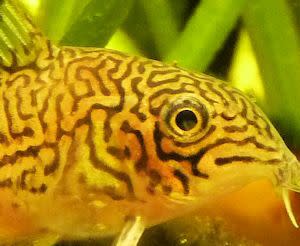
Species Overview
Scientific name: Corydoras trilineatus
Adult size: 2.5 inches (6 cm)
Lifespan: 10 years
Minimum tank size: 10 gallon
pH: 5.8–7.2
Hardness: to 18 degrees dGH
Temperature: 72–78 degrees F (22–26 degrees C)
Tankmates: Peaceful, keep in small schools
The three stripe cory is readily available in most pet shops, but may be a julii Cory. Three stripe corys can be distinguished by the spots on the head that are connected in a long string, giving them a maze-like appearance.
Sterbai Cory

vojce / Getty Images
Species Overview
Scientific name: Corydoras sterbai
Also known as: Sterba’s Cory
Adult size: 2.5 inches (6 cm)
Lifespan: 15-20 years
Minimum tank size: 10 gallon
pH: 6.0-7.6
Hardness: to 15 degrees dGH
Temperature: 73–82 degrees F (23–28 degrees C)
Tankmates: Peaceful, keep in small schools and with fish that are similar in size
Sterbai cory are easy to care for like other corys, and can get along well with a variety of other fish species. Their color ranges from dark brown to black but they have white dots all over their body and fins so they’re sure to grab your attention as they swim along the bottom of your tank.
Pygmy Corydoras
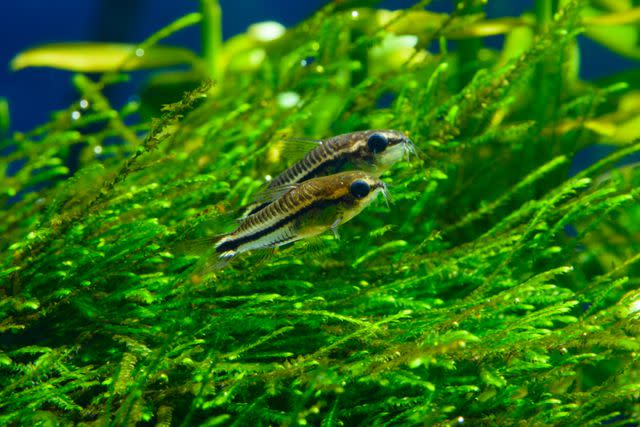
nektofadeev@gmail.com / Getty Images
Species Overview
Scientific name: Corydoras pygmaeus
Also known as: Pygmy Catfish
Adult size: 1 inch (2.54 cm)
Lifespan: 3 years
Minimum tank size: 8 gallon
pH: 6.4-7.5
Hardness: 6-10 degrees dGH
Temperature: 72–79 degrees F (22–26 degrees C)
Tankmates: Peaceful, keep in schools and without large fish that would view them as prey
Pygmy corys are smaller than other species, growing only to about 1 inch in length, so they can be a good choice if you have a smaller aquarium. They’re also different from other corys in that they will swim in the middle of the tank, not just on the bottom. They do best in schools of six or more fish.
Albino Corydoras
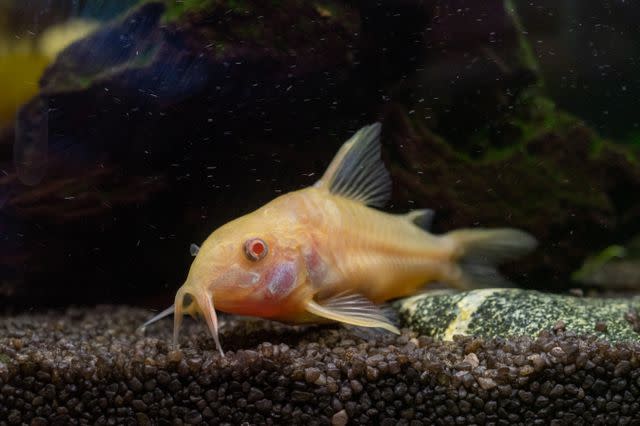
Wirestock / Getty Images
Species Overview
Scientific name: Corydoras aeneus
Also known as: Albino Cory Catfish
Adult size: 2.5 inches (6.5 cm)
Lifespan: 5 years
Minimum tank size: 20 gallon
pH: 5.5-7.5
Hardness: to 15 degrees dGH
Temperature: 70–81 degrees F (21–27 degrees C)
Tankmates: Peaceful, keep in schools
Unlike other corys that have striking colors and patterns, the albino cory is pale, ranging from pink to white. They’re easy to care for and hardy, so they’re good for beginners, and these small fish are peaceful so they can live in a tank with various other fish species.
Barbatus Cory
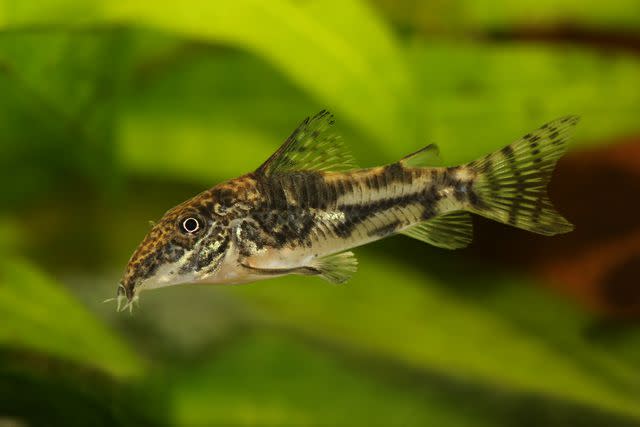
Mirko_Rosenau / Getty Images
Species Overview
Scientific name: Scleromystax barbatus
Also known as: Bearded Cory, Banded Cory
Adult size: 4 inches (10 cm)
Lifespan: 5 years
Minimum tank size: 30 gallon
pH: 6.0-8.0
Hardness: 2-25 degrees dGH
Temperature: 68–82 degrees F (20–28 degrees C)
Tankmates: Peaceful, keep in schools
The barbatus cory is one of the larger cory species, so they require a bigger tank. Also, like other corys, they are peaceful and do best in schools. Keep them with larger shrimp, as they might eat small ones. Males have more distinct markings and longer pectoral fins than females.
Orange Laser Cory
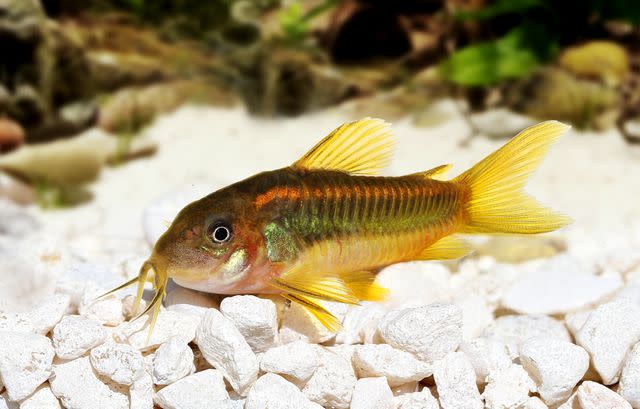
Mirko_Rosenau / Getty Images
Species Overview
Scientific name: Corydoras sp. “orange laser”
Also known as: Orange Stripe Cory
Adult size: 2.5 inches (6.35 cm)
Lifespan: 4 years
Minimum tank size: 30 gallon
pH: 6.0-7.5
Hardness: 2-12 degrees dGH
Temperature: 76–80 degrees F (24–27 degrees C)
Tankmates: Peaceful, keep in schools
The orange laser cory is brightly colored, featuring an orange stripe that makes them stand out against other fish in your tank. This is also one of the easiest fish to care for because they don’t have complicated requirements. And, like other corys, they’re an excellent choice for a community tank.
Frequently Asked Questions
What do cory catfish eat?
Corys love to eat brine shrimp, algae wafers, fish pellets, algae pellets, freshwater plants, and vegetables.
How big do cory catfish get?
Cory catfish grow to be about 1 inch to 2.5 inches long.
How long do cory catfish live?
Corys have a lifespan from five to 10 years.
How many cory catfish can you put in a 10-gallon tank?
Between two and four. Each cory requires about one gallon of water, which is a formula you can keep in mind as you add fish to your tank.
How many cory catfish should be kept together?
Corys are fish that prefer living in groups. As a general rule, keep at least six corys in your tank.
Do cory catfish keep the tank clean?
Yes, corys can help keep your tank clean because they’re scavengers that look for food at the bottom of the tank. However, you still need to feed them and regularly clean your tank.
What are cory catfish good for?
Corys are a great choice for fish owners of all experience levels. They help keep your tank clean, they’re peaceful, and they are fun to watch.
Read Next: 11 Top Fish Species for Cold Freshwater Aquariums
Read the original article on The Spruce Pets.

